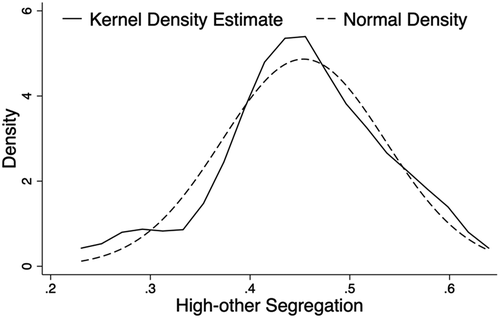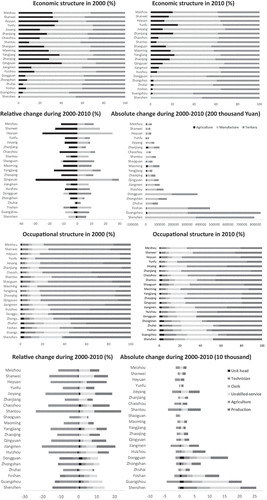Figures & data
Table 1. Description of the dependent variable and selected independent variables
Figure 1. The social spatial structures of subdistricts in Guangdong province in terms of educational attainment
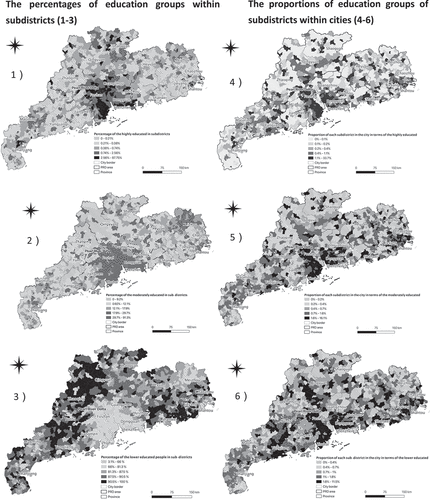
Table 2. Results of separate quadratic Beta regression
Figure 3. Quadratic Beta regressions between segregation and economic development variables

Figure 4. Quadratic Beta regressions between segregation and globalization (1), social structure (2–5) and housing regime (6) related factors
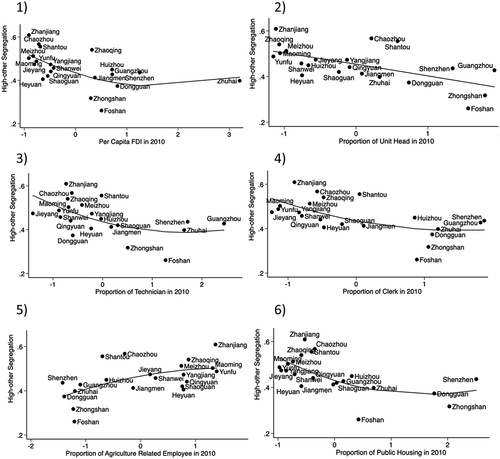
Figure 5. Economic and occupational structure and restructuring processes by city groups
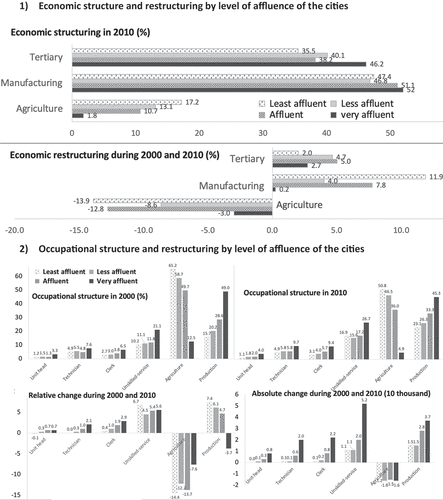
Note: A kernel density plot of the dependent variable is shown as above; Statistically, the mean of the high-other segregation degree between the highly educated and other people is 0.45, medium being 0.45 (the mean equals to the medium value in a normal distribution), skewness −0.302 (usually the absolute value less than −0.5 indicates approximate symmetry) and Kurtosis 3.16 (the Kurtosis is 3 for a normal distribution). We can in general conclude that the dependent variable is normally distributed
